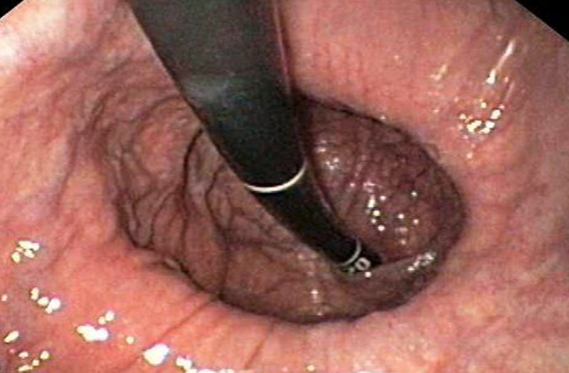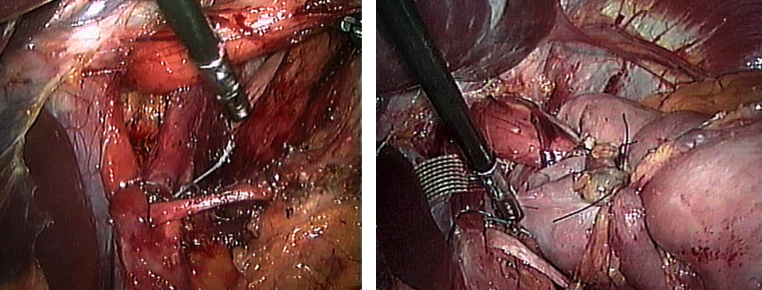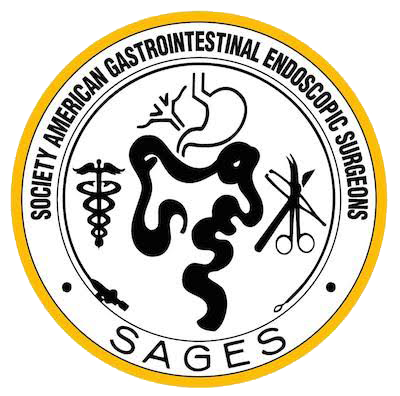Gastroesophageal reflux disease (GERD) is a digestive disorder that is caused by gastric acid flowing from the stomach into the esophagus.
Gastroesophageal reflux is the return of acidic stomach juices, or food and fluids, back up into the esophagus. After food passes through the esophagus into the stomach, a muscular valve called the lower esophageal sphincter (LES) closes, preventing the movement of food or acid upward. Gastroesophageal reflux occurs when the LES relaxes inappropriately, allowing acid from the stomach to flow backward into the esophagus.
Heartburn, also called acid indigestion, is the most common symptom of GERD. If left untreated, gastroesophageal reflux can cause esophageal ulcers, esophageal bleeding, and narrowing of the esophagus (peptic stricture).
A hiatal hernia may be associated with GERD. Severe heartburn may also result from hiatal hernia. A hiatal hernia is caused by an opening in the diaphragm, a flat muscle that separates the chest from the abdomen, allowing a portion of the stomach to protrude into the chest. This condition can then cause the Lower Esophageal Sphincter to fail. Although most cases of gastroesophageal reflux are caused by a weakened valve, there are other causes that need to be assessed by your doctor.

This image needs a description
What contributes to GERD?
Some people are born with a naturally weak sphincter (LES). For others, however, fatty and spicy foods, certain types of medication, tight clothing, smoking, drinking alcohol, vigorous exercise or changes in body position (bending over or lying down) may cause the LES to relax, causing reflux. A hiatal hernia (a common term for GERD) may be present in many patients who suffer from GERD, but may not cause symptoms of heartburn.
How is GERD treated?
GERD is generally treated in three progressive steps:
1. Lifestyle changes
In many cases, changing diet and taking over-the-counter antacids can reduce how often and how harsh your symptoms are. Losing weight, reducing or eliminating smoking and alcohol consumption, and altering eating and sleeping patterns can also help.
2. Drug therapy
If symptoms persist after these life style changes, drug therapy may be required. Antacids neutralize stomach acids and over-the-counter medications reduce the amount of stomach acid produced. Both may be effective in relieving symptoms. Prescription drugs may be more effective in healing irritation of the esophagus and relieving symptoms. This therapy needs to be discussed with your surgeon.
3. Surgery
Patients who do not respond well to lifestyle changes or medications or those who continually require medications to control their symptoms, will have to live with their condition or may undergo a surgical procedure. Surgery is very effective in treating GERD.
There are procedures being tried, known as Intraluminal Endoscopic Procedures, which are alternatives to laparoscopic and open surgery. You will need to discuss with your surgeon and physician whether you are a candidate for any of these procedures.

This image needs a description.
What is Nissen fundoplication?
During the fundoplication surgery, the surgeon improves the natural barrier between the stomach and the esophagus by wrapping a part of the stomach known as the gastric fundus around the lower esophagus. This prevents the flow of acids from the stomach into the esophagus, and strengthens the valve between the esophagus and stomach, which stops acid from backing up into the esophagus as easily. This procedure is often done using a laparoscopic surgical technique. It can also be done as traditional (open) surgery.
How is the laparoscopic (Keyhole) technique performed?
A keyhole surgical procedure is an alternative to traditional or what is known as “open” surgery, in which a large incision must be made. Now, minimally invasive surgery is used to treat GERD. We use Keyhole surgery to make incisions only millimeters in size.
Keyhole surgery eliminates the need for a long incision. Small incisions are made to accommodate small tubes called “trocars.” These create a passageway for special surgical instruments and a laparoscope (camera).
During the laparoscopic Nissen fundoplication procedure, surgeons use small surgical tools and a laparoscope to repair the muscle that separates the stomach and esophagus.
What are the advantages of the laparoscopic method?
The advantage of the laparoscopic approach is that it usually provides:
- reduced postoperative pain
- shorter hospital stay
- a faster return to work
- improved cosmetic result
How long will I have to stay in hospital? When can I resume normal activities?
The laparoscopic surgery often requires a hospital stay of only 1-2 days. You should be able to return to normal activities between one and two weeks, compared with four to six weeks for traditional surgery.
Who are good candidates for the procedure?
Surgical candidates are those whose heartburn is not well controlled with medicine, those who want to fix the problem without having to take medicine long term, and those who are having complications from reflux, including ulcers, strictures, hernias or Barrett’s esophagus.
What should i expect after surgery?
Patients are encouraged to engage in light activity while at home after surgery.
Post operative pain is generally mild although some patients may require prescription pain medication.
Anti-reflux medication is usually not required after surgery.
Some surgeons modify patients diet after surgery beginning with liquids followed by gradual advance to solid foods. You should ask your surgeon about dietary restrictions immediately after the operation.
You will probably be able to get back to your normal activities within a short amount of time. These activities include showering, driving, walking up stairs, lifting, working and engaging in sexual intercourse.
Call and schedule a follow-up appointment within 2 weeks after your operation.
What are the success rates for this surgery/procedure?
The success rate for the minimally invasive surgery is 90 to 95 percent for patients who have the typical symptoms of GERD, such as heartburn, regurgitation, or belching. For those whose with less typical symptoms, including hoarseness and chronic cough, the surgery is about 70 to 80 percent effective at relieving their symptoms.
Are there side effects to this operation?
Studies have shown that the vast majority of patients who undergo the procedure are either symptom-free or have significant improvement in their GERD symptoms.
Long-term side effects to this procedure are generally uncommon.
Some patients develop temporary difficulty swallowing immediately after the operation. This usually resolves within one to three months after surgery.
Occasionally, patients may require a procedure to stretch the esophagus (endoscopic dilation) or rarely re-operation. The ability to belch and or vomit may be limited following this procedure. Some patients report stomach bloating. Rarely, some patients report no improvement in their symptoms.
What complications can occur?
Although the operation is considered safe, complications may occur as they may occur with any operation.
Complications may include but are not limited to:
- adverse reaction to general anesthesia
- bleeding
- injury to the esophagus, spleen, stomach or internal organs
- infection of the wound, abdomen, or blood
other less common complications may also occur.
Your surgeon may wish to discuss these with you. He will also help you decide if the risks of laparoscopic anti-reflux surgery are less than non-operative management.
When to call your doctor
Be sure to call your physician or surgeon if you develop any of the following:
- Persistent fever over 101 degrees F (39 C)
- Bleeding
- Increasing abdominal swelling
- Pain that is not relieved by your medications
- Persistent nausea or vomiting
- Chills
- Persistent cough or shortness of breath
- Purulent drainage (pus) from any incision
- Redness surrounding any of your incisions that is worsening or getting bigger
- You are unable to eat or drink liquids
